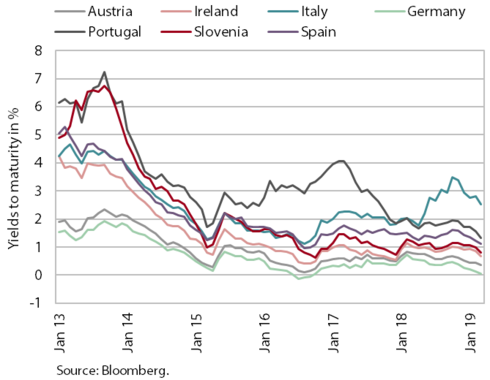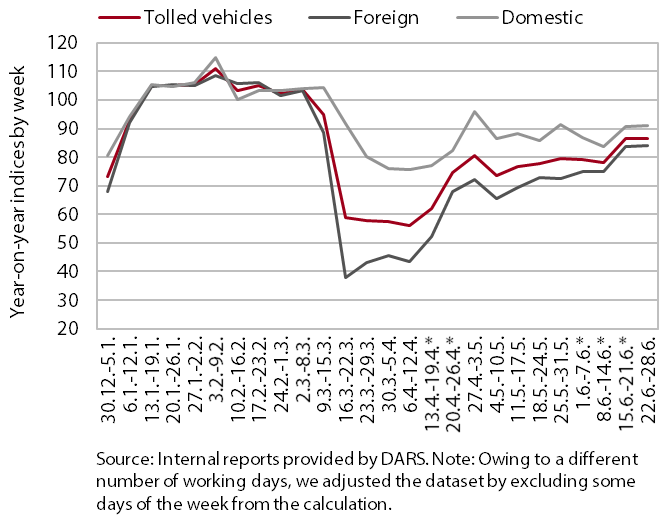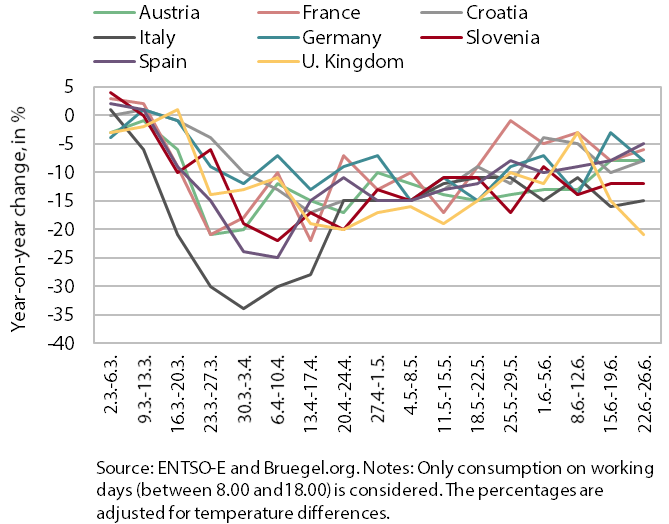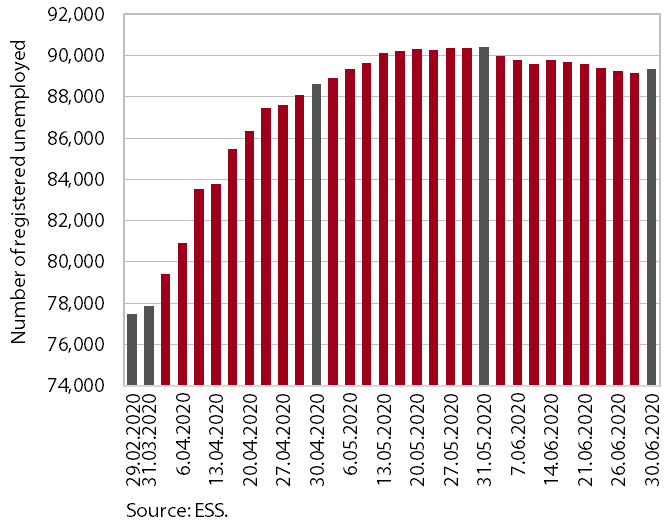Charts of the Week
Current economic trends from 1 to 3 July 2020: bond, traffic of electronically tolled vehicles, electricity consumption and registered unemployment
Yields to maturity on bonds of peripheral countries, including the Slovenian 10-year bond, increased noticeably in the second quarter. Based on data on freight transport and electricity consumption, we estimate that at the end of June economic activity was significantly lower than a year earlier, but from mid-April the year-on-year decline has been slowing. The number of unemployed persons had fallen again somewhat by the end of June, after having risen significantly during the epidemic.
Bond, Q2 of 2020

The situation on euro area bond markets deteriorated following the outbreak of the COVID-19 epidemic. In view of high uncertainty, part of demand was shifted to safer investments. Only yields to maturity of peripheral countries thus rose more noticeably, despite increased borrowing requirements of all countries. Although the EC and ECB measures managed to stem the further deterioration in bond markets to some extent, the yield to maturity of the Slovenian 10-year bond nevertheless increased by almost 50 basis points (to 0.65%) in the second quarter. The spread to the German bond also widened, to almost 110 basis points, and was the highest in the last three years.
Traffic of electronically tolled vehicles on Slovenian motorways, June 2020

After rebounding in April, freight traffic on Slovenian motorways did not increase much in the following two months and remained significantly lower than before the epidemic. A more than 40% decline in the first weeks after the declaration of the epidemic was followed by an improvement in April and stagnation in May. In the second half of June, traffic increased again and was around 13% lower year on year. The distance travelled by domestic and foreign trucks declined by 9% and 16% respectively. Foreign truck traffic has otherwise increased more from the lowest March value than traffic by domestic trucks, which is attributable to EU measures for the free flow of goods across borders and the relaxation of measures in some countries.
Electricity consumption, June 2020

The year-on-year decline in weekly electricity consumption remained close to the May average in the last week of June. Electricity consumption in Slovenia was 12% lower than in the same week last year. This is close to the average decline in May, which was 14%. In Slovenia’s main trading partners, the decline in the second half of June increased the most (relative to the first half) in Croatia (from 4% to 9%), while it decreased in Austria and Germany.
Registered unemployment, June 2020

The number of unemployed persons declined in June after rising up to mid-May. At the end of June, it amounted to 89,377 persons (26.3% more than one year earlier), which is 1.1% less than at the end of May. We estimate that the decline is related to the lifting of stringent containment measures in Slovenia and neighbouring countries and the adoption of the third legislative package of measures to mitigate the economic impact of the crisis. Among the newly registered, there were significantly more persons who lost work because their fixed-term employment contracts were not extended (a reason more frequently cited among younger age groups) or for business reasons than before the outbreak of the epidemic. The activities with the largest inflows are accommodation and food service activities, trade and manufacturing.
